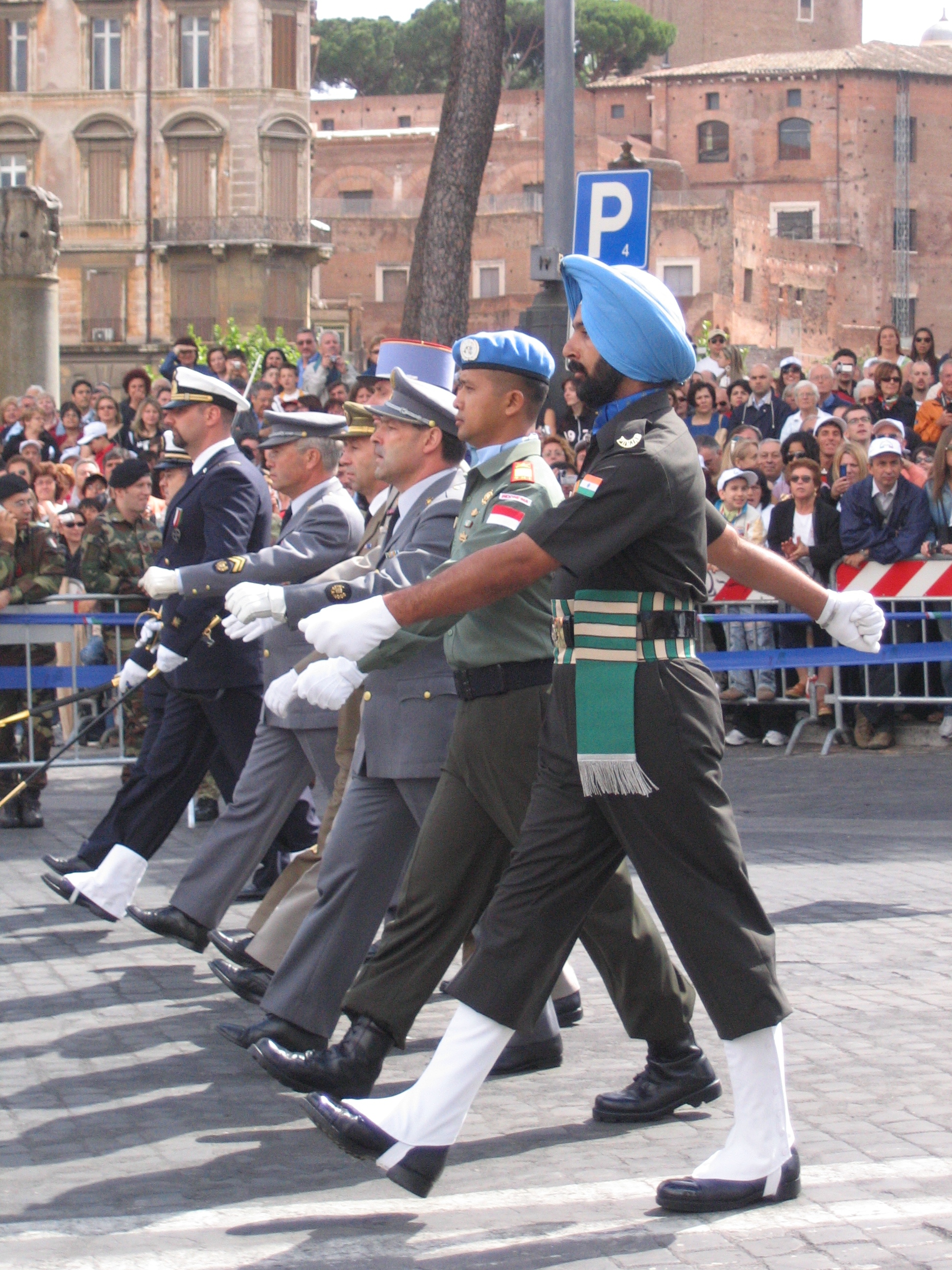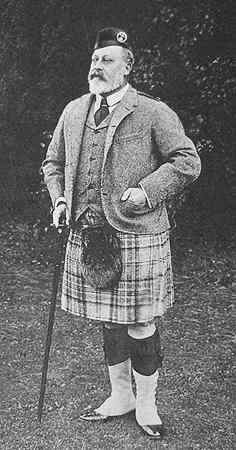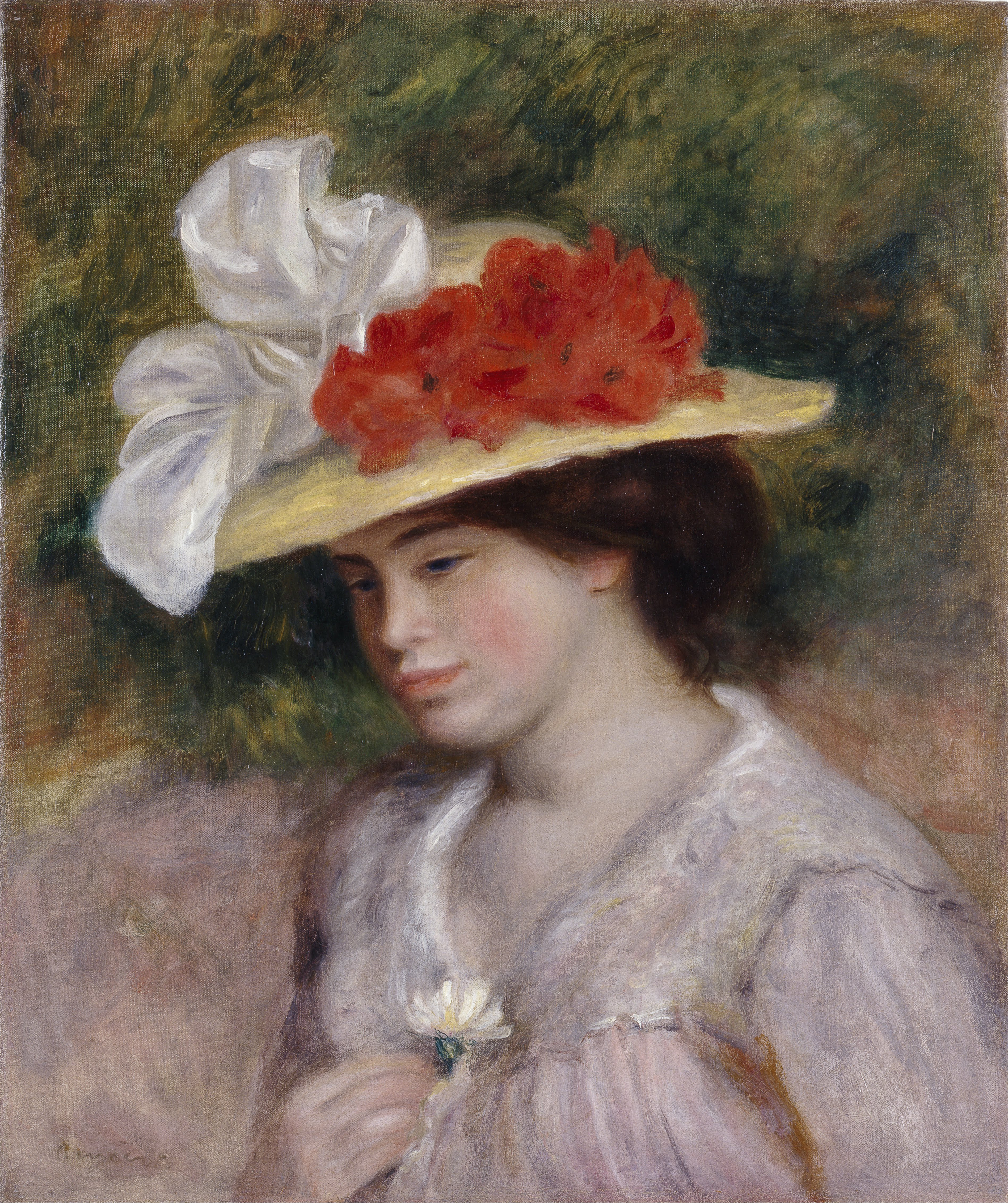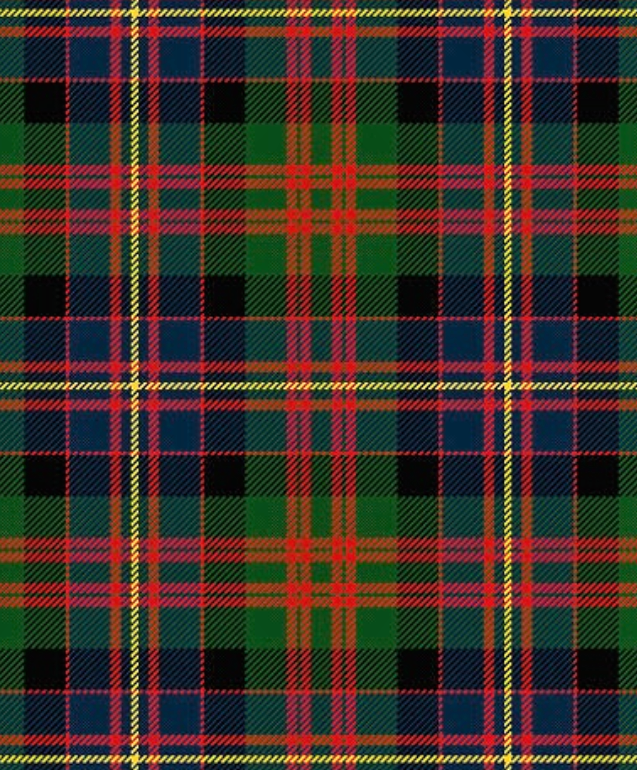|
Feather Bonnet
The feather bonnet is a type of military headdress used mainly by the Scottish Highland infantry regiments of the British Army from about 1763 until the outbreak of World War I. It is now mostly worn by pipers and drummers in various bands throughout the world. It is also worn in a similar fashion by regiments in various Commonwealth armies. History The feather bonnet began with the knitted blue bonnet with a chequered border. This was propped up and worn with a tall hackle. During the 17th and 18th century, the highlanders who wore this hat began to add ostrich feathers to decorate it. This decoration evolved into a full covering of the original bonnet. The ostrich feathers were then entwined into a lightweight cage, producing the height. The feather bonnet has one or more (usually 4 or 5) "tails" that hang down below the headband, and the regimental badge and hackle are displayed on the left. There are parallels between the evolution of the Highland bonnet between 1760 an ... [...More Info...] [...Related Items...] OR: [Wikipedia] [Google] [Baidu] |
Bearskin
A bearskin is a tall fur cap, usually worn as part of a ceremonial military uniform. Traditionally, the bearskin was the headgear of grenadiers, and remains in use by grenadier and guards regiments in various armies. Bearskins should not be confused with other types of fur military headdresses, notably the smaller busby. History The cloth caps worn by the original grenadiers in European armies during the seventeenth century were frequently trimmed with fur. The practice fell into disuse until the second half of the eighteenth century, when grenadiers in the British, Spanish, and French armies began wearing high fur hats with cloth tops, and, sometimes, ornamental front plates. Imitating their Prussian counterparts, French grenadiers are described as wearing bearskins as early as 1761. The purpose appears to have been to add to the apparent height and impressive appearance of these troops both on the parade ground and the battlefield. During the nineteenth century, the e ... [...More Info...] [...Related Items...] OR: [Wikipedia] [Google] [Baidu] |
Military Uniforms
A military uniform is a standardised dress worn by members of the armed forces and paramilitaries of various nations. Military dress and styles have gone through significant changes over the centuries, from colourful and elaborate, ornamented clothing until the 19th century, to utilitarian camouflage uniforms for field and battle purposes from World War I (1914–1918) on. Military uniforms in the form of standardised and distinctive dress, intended for identification and display, are typically a sign of organised military forces equipped by a central authority. Military uniforms differ not only according to military units but tend to also be offered in different levels of formality in accordance with Western dress codes: full dress uniform for formal wear, mess dress uniform for semi-formal wear, service dress uniform for informal wear, and combat uniform (also called "battle/field dress") which would equal casual wear. Sometimes added to the casual wear category is physical tr ... [...More Info...] [...Related Items...] OR: [Wikipedia] [Google] [Baidu] |
Scottish Clothing
Highland dress is the traditional, regional dress of the Highlands and Isles of Scotland. It is often characterised by tartan (''plaid'' in North America). Specific designs of shirt, jacket, bodice and headwear may also be worn along with clan badges and other devices indicating family and heritage. Men's highland dress typically includes a kilt or trews of his clan tartan, along with either a tartan full plaid, fly plaid, or short belted plaid. There are a number of accessories, which may include but are not limited to: a belt, sporran, sgian-dubh, knee-socks with a cuff known as kilt hose, garters, kilt pins and clan badges. Women's highland dress is also based on the clan tartan, either that of her birth clan or, if married, that of her spouse's clan if she so chooses. Traditionally, women and girls do not wear kilts but may wear ankle-length tartan skirts, along with a colour-coordinated blouse and vest. A tartan earasaid, sash or tonnag (smaller shawl) may also be worn, ... [...More Info...] [...Related Items...] OR: [Wikipedia] [Google] [Baidu] |
Hats
A hat is a head covering which is worn for various reasons, including protection against weather conditions, ceremonial reasons such as university graduation, religious reasons, safety, or as a fashion accessory. Hats which incorporate mechanical features, such as visors, spikes, flaps, orthodontic headgear, braces or party hat, beer holders shade into the broader category of headgear. In the past, hats were an indicator of social status. In the military, hats may denote nationality, branch of service, rank or regiment. Police typically wear distinctive hats such as peaked caps or brimmed hats, such as those worn by the Royal Canadian Mounted Police. Some hats have a protective function. As examples, the hard hat protects construction workers' heads from injury by falling objects, a British police Custodian helmet protects the officer's head, a sun hat shades the face and shoulders from the sun, a cowboy hat protects against sun and rain and an ushanka fur hat with fold-down ... [...More Info...] [...Related Items...] OR: [Wikipedia] [Google] [Baidu] |
Robert Gibb - The Thin Red Line
The name Robert is an ancient Germanic given name, from Proto-Germanic "fame" and "bright" (''Hrōþiberhtaz''). Compare Old Dutch ''Robrecht'' and Old High German ''Hrodebert'' (a compound of '' Hruod'' ( non, Hróðr) "fame, glory, honour, praise, renown" and ''berht'' "bright, light, shining"). It is the second most frequently used given name of ancient Germanic origin. It is also in use as a surname. Another commonly used form of the name is Rupert. After becoming widely used in Continental Europe it entered England in its Old French form ''Robert'', where an Old English cognate form (''Hrēodbēorht'', ''Hrodberht'', ''Hrēodbēorð'', ''Hrœdbœrð'', ''Hrœdberð'', ''Hrōðberχtŕ'') had existed before the Norman Conquest. The feminine version is Roberta. The Italian, Portuguese, and Spanish form is Roberto. Robert is also a common name in many Germanic languages, including English, German, Dutch, Norwegian, Swedish, Scots, Danish, and Icelandic. It can be use ... [...More Info...] [...Related Items...] OR: [Wikipedia] [Google] [Baidu] |
Tulwar
The talwar (), also spelled ''talwaar'' and ''tulwar'', is a type of curved sword or sabre from the Indian subcontinent. Etymology and classification The word ''talwar'' originated from the Sanskrit word ''taravāri'' ( sa, तरवारि) which means "one-edged sword". It is the word for ''sword'' in several related languages, such as Hindustani (Urdu and Hindi), Nepali, Marathi, Gujarati, Punjabi, etc. and as () in Bengali. Like many swords from around the world with an etymology derived from a term meaning simply 'sword', the talwar has in scholarship, and in museum and collector usage, acquired a more specific meaning. Unfortunately, South Asian swords, while showing a rich diversity of forms, suffer from relatively poor dating (so developmental history is obscure) and a lack of precise nomenclature and classification. The typical talwar is a type of sabre, characterised by a curved blade (without the radical curve of some Persian swords), possessing an all-metal hi ... [...More Info...] [...Related Items...] OR: [Wikipedia] [Google] [Baidu] |
93rd (Sutherland Highlanders) Regiment Of Foot
The 93rd (Sutherland Highlanders) Regiment of Foot was a Line Infantry Regiment of the British Army, raised in 1799. Under the Childers Reforms, it amalgamated with the 91st (Argyllshire Highlanders) Regiment of Foot to form the Argyll and Sutherland Highlanders. History Formation The regiment was raised from the Sutherland Fencibles by Major-General William Wemyss on behalf of the Countess of Sutherland as the 93rd (Highland) Regiment of Foot on 16 April 1799. The first muster of the regiment took place at Skail in Strathnaver in August 1800. One of the soldiers who attended the muster was Sergeant Samuel Macdonald, a soldier who stood six feet ten inches tall and had a chest measuring 48 inches. The Countess of Sutherland, on seeing Sergeant Macdonald, donated a special allowance of 2 shillings 6 pence a day, and stated that anyone as large as Macdonald "must require more sustenance than his military pay can afford."McElwee, p. 6. According to historian James Hunte ... [...More Info...] [...Related Items...] OR: [Wikipedia] [Google] [Baidu] |
Argyll And Sutherland Highlanders
Argyll (; archaically Argyle, in modern Gaelic, ), sometimes called Argyllshire, is a historic county and registration county of western Scotland. Argyll is of ancient origin, and corresponds to most of the part of the ancient kingdom of on Great Britain. Argyll was also a medieval bishopric with its cathedral at Lismore, as well as an early modern earldom and dukedom, the Dukedom of Argyll. It borders Inverness-shire to the north, Perthshire and Dunbartonshire to the east, and—separated by the Firth of Clyde—neighbours Renfrewshire and Ayrshire to the south-east, and Buteshire to the south. Between 1890 and 1975, Argyll was an administrative county with a county council. Its area corresponds with most of the modern council area of Argyll and Bute, excluding the Isle of Bute and the Helensburgh area, but including the Morvern and Ardnamurchan areas of the Highland council area. There was an Argyllshire constituency of the Parliament of Great Britain then Parl ... [...More Info...] [...Related Items...] OR: [Wikipedia] [Google] [Baidu] |
Queen's Own Cameron Highlanders
The Queen's Own Cameron Highlanders or 79th (The Queen's Own Cameron Highlanders) Regiment of Foot was a line infantry regiment of the British Army, raised in 1793. It amalgamated with the Seaforth Highlanders (Ross-shire Buffs, The Duke of Albany's) to form the Queen's Own Highlanders in 1961. History The regiment was raised as the 79th Regiment of Foot (Cameronian Volunteers) on 17 August 1793 at Fort William from among the members of the Clan Cameron by Sir Alan Cameron of Erracht.Jameson, p. 2 Wars with France 1793 – 1815 The regiment was deployed briefly to Ireland and southern England, then to Flanders in 1794 where it took part in an unsuccessful campaign under the command of the Duke of York during the French Revolutionary Wars.Jameson, p. 3 On its return to England the 79th Foot was listed for disbandment, with the men being drafted into other units. In the end the regiment was reprieved, being instead posted to the West Indies in 1795; after a two-year tour t ... [...More Info...] [...Related Items...] OR: [Wikipedia] [Google] [Baidu] |
Gordon Highlanders
Gordon may refer to: People * Gordon (given name), a masculine given name, including list of persons and fictional characters * Gordon (surname), the surname * Gordon (slave), escaped to a Union Army camp during the U.S. Civil War * Clan Gordon, aka the House of Gordon, a Scottish clan Education * Gordon State College, a public college in Barnesville, Georgia * Gordon College (Massachusetts), a Christian college in Wenham, Massachusetts * Gordon College (Pakistan), a Christian college in Rawalpindi, Pakistan * Gordon College (Philippines), a public university in Subic, Zambales * Gordon College of Education, a public college in Haifa, Israel Places Australia *Gordon, Australian Capital Territory *Gordon, New South Wales * Gordon, South Australia *Gordon, Victoria *Gordon River, Tasmania *Gordon River (Western Australia) Canada *Gordon Parish, New Brunswick *Gordon/Barrie Island, municipality in Ontario * Gordon River (Chochocouane River), a river in Quebec Scotland *Gordon ... [...More Info...] [...Related Items...] OR: [Wikipedia] [Google] [Baidu] |
Seaforth Highlanders
The Seaforth Highlanders (Ross-shire Buffs, The Duke of Albany's) was a line infantry regiment of the British Army, mainly associated with large areas of the northern Highlands of Scotland. The regiment existed from 1881 to 1961, and saw service in World War I and World War II, along with many smaller conflicts. In 1961 the regiment was amalgamated with the Queen's Own Cameron Highlanders to form the Queen's Own Highlanders (Seaforth and Camerons), which merged, in 1994, with the Gordon Highlanders to form the Highlanders (Seaforth, Gordons and Camerons). This later joined the Royal Scots Borderers, the Black Watch, the Royal Highland Fusiliers and the Argyll and Sutherland Highlanders to create the present Royal Regiment of Scotland. History Formation The regiment was created in 1881 through the amalgamation of the 72nd (Duke of Albany's Own Highlanders) Regiment of Foot and the 78th (Highlanders) (Ross-shire Buffs) Regiment of Foot – which became the 1st and 2nd battalions ... [...More Info...] [...Related Items...] OR: [Wikipedia] [Google] [Baidu] |

.jpg)






